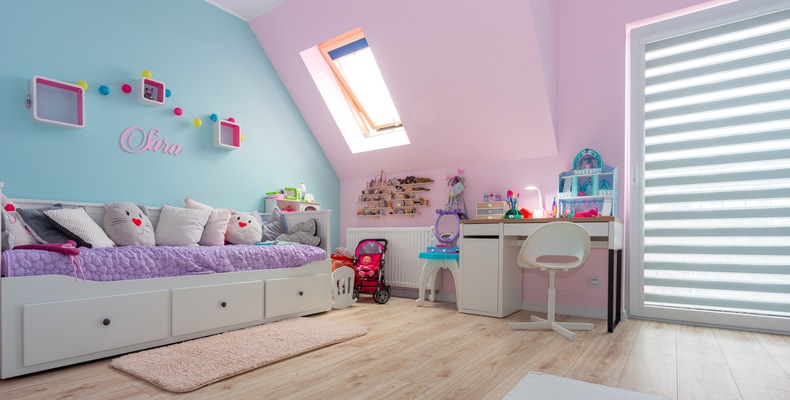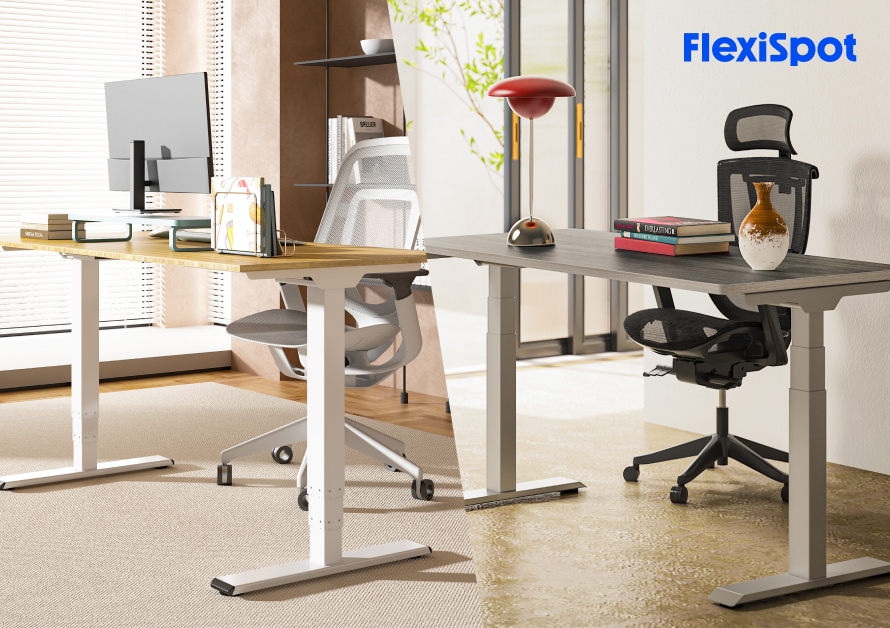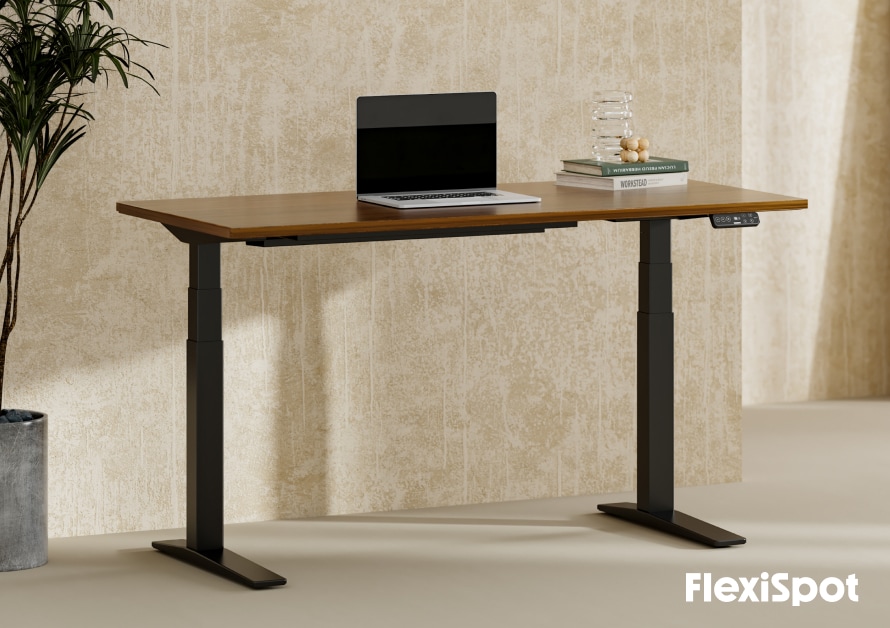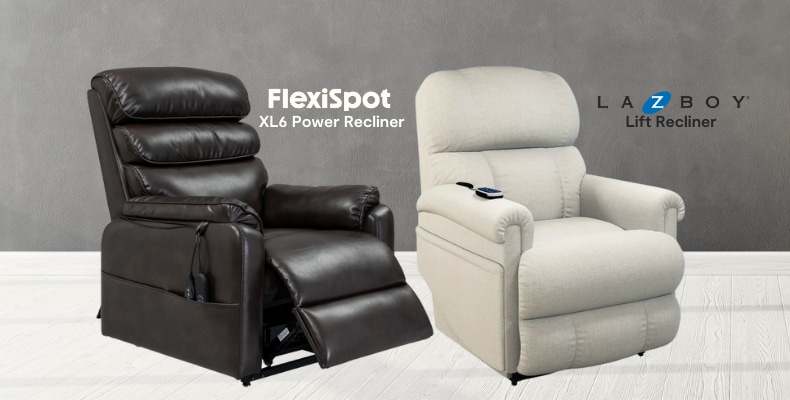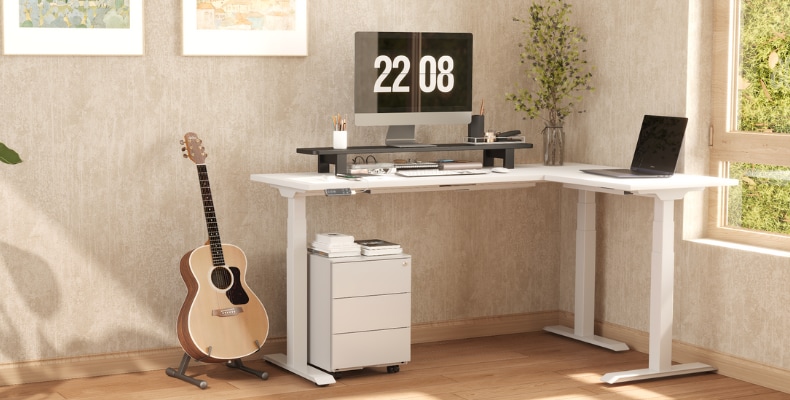Children today are way less active than we were. Unlike our lifestyle, children today spend more time indoors, sitting or lying down. They seldom in engage in physical activities. Most children spend hours sitting in front of the computer, mobile phone or tablet, and TV. While parents may think it's good to have their kids in front of their eyes under their supervision at all times, a sedentary lifestyle in children is detrimental to their health and well-being.
Prolonged sitting puts children at a high risk of developing musculoskeletal disorders. These disorders initially present as pain in the back, neck, and shoulders but can aggravate serious injuries and disorders over time.
What you can do as parents is ensure the best ergonomic conditions for your children at home. After returning from school, children spend a lot of time completing homework and assignments, which means they spend a lot of their time in their study rooms. If you want to provide your child with a healthier environment at home, there's no better place to start than the study room!
This blog post discusses the importance of ergonomics in children, how good ergonomics can benefit them, and how you can design an ergonomic study room for your children.

Ergonomics in Children
Ergonomics are as important in children as they're in adults. If you ask us, we would say they're more important in children as their bodies are still developing and, therefore, children are at a higher risk of developing musculoskeletal disorders and other posture-related health conditions.
Let's see how poor ergonomics can affect children in the long run:
Pain in the Back, Neck, and Shoulders
If your child is sitting in an incorrect posture for long hours during studying when they're bent over their books, they'll soon start complaining about pain in their back, neck, and shoulders. This is because sitting in an incorrect posture strains the neck and shoulder muscles and also strains the lower back, resulting in back pain. When a child is uncomfortable and in pain, they may not be able to concentrate on their studies.
Musculoskeletal Disorders
Pain in the neck, shoulders, and back are just initial signs that your child may be beginning to develop musculoskeletal disorders. Prolonged stress on the muscles, bones, and joints leads to injury and damage, resulting in long-term disorders that can affect your child's overall quality of life and well-being.
Permanently Incorrect Posture
Sitting in the wrong posture for extended hours puts excessive pressure on the spine. When the spine is perfectly aligned, it forms the shape S. However, when a child is sitting in a hunched posture for long hours, their spine will permanently become hunched as their spine isn't as strong as adults. The natural S-curvature will get altered, worsening the strain and pressure on the back, leading to chronic back pain. The misalignment of the spine will also result in balance problems in the child. If your child's posture becomes permanently damaged, they'll need professional attention.
Poor Eyesight and Headaches
If your child continues to study in poor ergonomic conditions where the lighting isn't adequate, and the computer monitor is placed too close or too far, your child will be at risk of having weak eyesight. They'll complain about headaches frequently, too because poor ergonomics cause eye strain.
All of these risks can affect your child's focus, concentration, and productivity which will then have a negative impact on their results, and this could become the basis of poor mental health.
Designing an Ergonomic Study Room
Your best bet at protecting your child from the consequences of poor study room ergonomics is to design an ergonomic study room where you can rest assured that your child's health and safety will be safeguarded.
Below are some tips that'll help you design an ergonomics-friendly study room:

1. Invest in a Study Table
A study room is incomplete without a study table. Most parents opt for regular wooden study tables. While these tables serve the purpose well, they put your child at risk of developing posture-related musculoskeletal disorders. These study tables are of a fixed height, so they may not be ideal for the child. Your child will have to bend forward to reach the desk's surface if the desk is too low for them, and they'll have to stretch their back and neck if the desk is too high for them.
What you need for your child is an ergonomic study table. This table will have an adjustable height feature that'll enable your child to adjust the height of the table to suit their comfort. Your child will be able to study in a neutral posture with their back against the chair's backrest and arms placed comfortably over the desk. The right height of the study table will also ensure that the computer is placed at the right height.
The best thing about ergonomic study tables is that the table will grow with your child. You won't have to buy a new table when your child outgrows it. You can raise the height and continue using it for several years.

2. Replace the Study Chair
If your child uses a regular stool to sit and study, you need to replace it immediately. The second tip on our list is to replace your child's study chair with an ergonomic one. Ergonomic study chairs like Ergonomic Study Chair for Kids S05 aren't like regular chairs. They're equipped with unique features that ensure your child's comfort and safety. Ergonomic chairs have an adjustable height feature that allows your child to lower or raise the height of the chair so that their feet are flat on the floor and not dangling in the air. Ergonomic chairs also have a flexible backrest so that your child's back is fully supported. Ergonomic chairs promote a healthy posture and, therefore, a healthy child.

3. Install an Adjustable Monitor Mount
Although laptops are more common today, it's better to install an external monitor mounted on an adjustable monitor mount for your child. This is because children have shorter arms, and they'll have to sit too close to the laptop to use the built-in keyboard of the laptop. However, when you've got an external computer monitor mounted on an adjustable mount, you can ensure that the monitor is placed at the right distance and level for the child and that it isn't too close to them that can cause eye strain.

4. Advice Your Child to Use Computer Glasses
The glare from the computer monitor can cause eye strain, leading to headaches and weakening eyesight. However, if you ensure that your child is wearing computer glasses, you can reduce eye strain significantly. Computer glasses will filter the blue light coming from the computer screen and reduce eye strain. Without computer glasses, your child is at risk of macular degeneration, weak eyesight, and even certain cancers in the long term.

5. Get Your Child Ergonomic Keyboard and Mouse
Children's joints and bones are very sensitive. Even slight strain can damage or injure their joints over time. If your child uses a regular mouse and keyboard, they're at a high risk of Carpal Tunnel Syndrome as pressing the keys, and mouse buttons can strain the joints of their fingers and compress the nerves. However, the risk is significantly reduced when your child uses an ergonomic keyboard and mouse. The keys of an ergonomic keyboard are softer, and the design encourages the child to place their hands over the keyboard in the correct position. The buttons on an ergonomic mouse are also very sensitive, which means your child won't have to press them too hard.

6. Install Adequate Lighting
Adequate lighting is critically important for your child's study room. Since the child will be reading books with a small font size, if the lighting isn't adequate, the child will have to try too hard to read. This will strain their eyes and increase the risk of eyesight weakening and headaches. Apart from regular ceiling lights, it's important that you arrange a task lamp on their study table so that their desk is illuminated well.

7. Install Bookshelves at the Right Height
If the bookshelves are too high for your child, they'll have to extend their arm to reach the books. This puts them at risk of muscle strain. Your child might also complain about pain in their shoulders and back. Make sure that the bookshelves are arranged at a suitable height for your child so that they don't have to extend their arms too much to get the books they want.
Closing Word
Your children won't know if they're doing something wrong unless you educate them. Talk to them about how poor ergonomics will affect them so that they understand your efforts better. Once your child knows the function of each thing in their study room, they'll be more conscious about their posture and practices. Start with incorporating the right elements into your child's study room. Your efforts today will benefit your child in the coming days.

